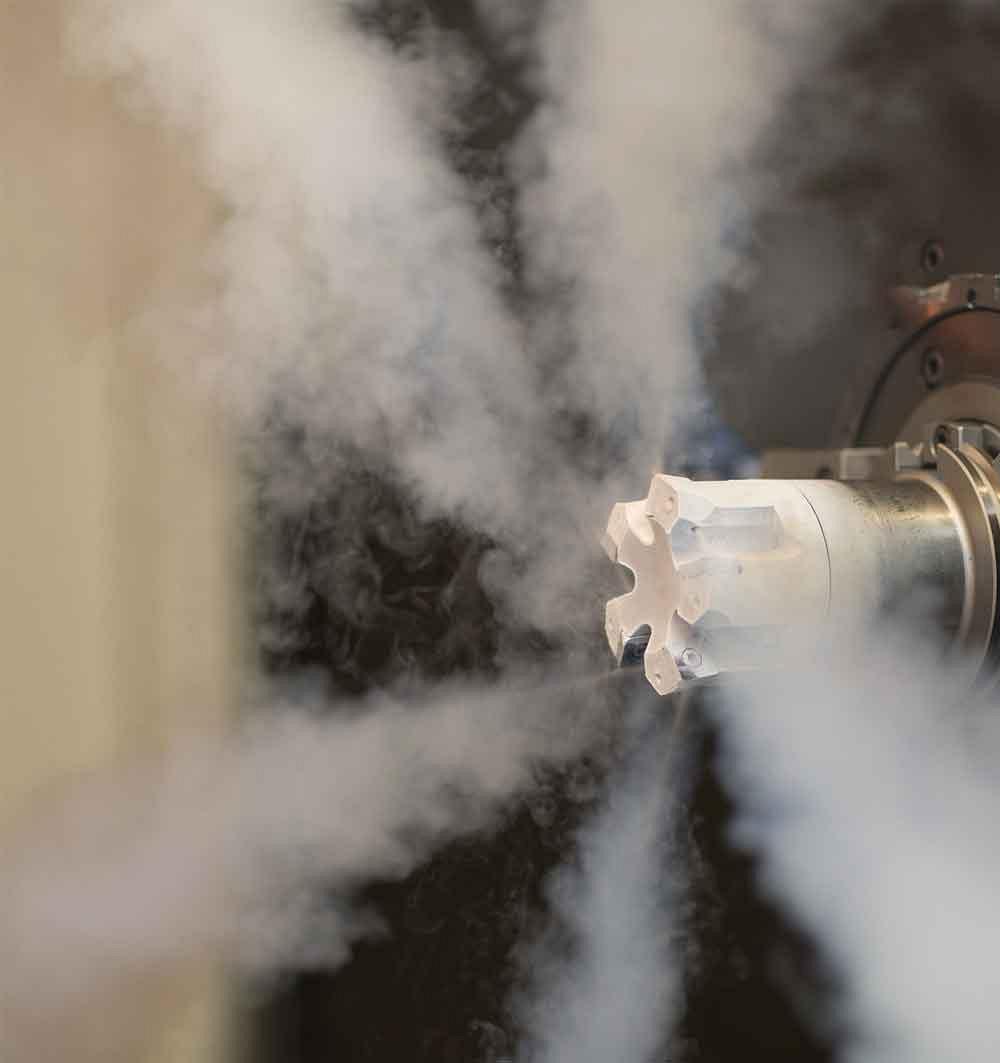- FMA
- The Fabricator
- FABTECH
- Canadian Metalworking
5ME acquires cryogenic machining technology patents
- October 18, 2016
- News Release
- Metalworking
5ME® recently acquired 51 patents in four patent families from Creare, an innovator in cryogenic systems and fluid dynamics. The acquisition gives the company control of the IP related to cryogenic machining – specifically, the process of transmitting liquid nitrogen at -321 degrees F through the spindle/turret and tool body, directly to a cutting tool’s edge. Each patent procured is related to cryogenic machining and aids in making it simpler for customers to adapt to this technology, regardless of process or brand of machine.
The breakthrough technology enables higher cutting speeds for increased material removal rates and longer tool life.
“The empirical knowledge gained through exhaustive testing and combined efforts of 5ME and Creare has proven that cryogenic machining is a viable method in manufacturing today,” said Bill Horwarth, president of 5ME. “The acquisition of this intellectual property puts all of the cryogenic machining technology and knowledge under one roof, allowing us to continue development of this revolutionary manufacturing technology as well as provide excellent customer service.”
In 2003 Creare, along with the U.S. Navy, Navair, and Bell Helicopter, led the R&D for cryogenic machining and tooling in test environments through a Small Business Innovation Research project. 5ME then evolved the technology through extensive trials at its technology center located in Warren, Mich., and eventually arranged beta tests in practical applications with aerospace OEMs and heavy equipment manufacturers.
“We applied what we learned working with Creare in controlled environments and gave it ‘real-world’ exposure in the field and the results were excellent,” said Horwarth. “We’re seeing cryogenic machining gain wide acceptance, especially in aerospace and heavy equipment applications.”
In a recent case study involving a titanium aerostructure component, 5ME’s cryogenic machining technology reduced the cycle time from 44 to 21 hours. Other results included better surface integrity and part quality, reduced white layer, lower energy consumption, and improved worker health and safety through the elimination of traditional coolants.
subscribe now


Keep up to date with the latest news, events, and technology for all things metal from our pair of monthly magazines written specifically for Canadian manufacturers!
Start Your Free Subscription- Industry Events
MME Winnipeg
- April 30, 2024
- Winnipeg, ON Canada
CTMA Economic Uncertainty: Helping You Navigate Windsor Seminar
- April 30, 2024
- Windsor, ON Canada
CTMA Economic Uncertainty: Helping You Navigate Kitchener Seminar
- May 2, 2024
- Kitchener, ON Canada
Automate 2024
- May 6 - 9, 2024
- Chicago, IL
ANCA Open House
- May 7 - 8, 2024
- Wixom, MI




















